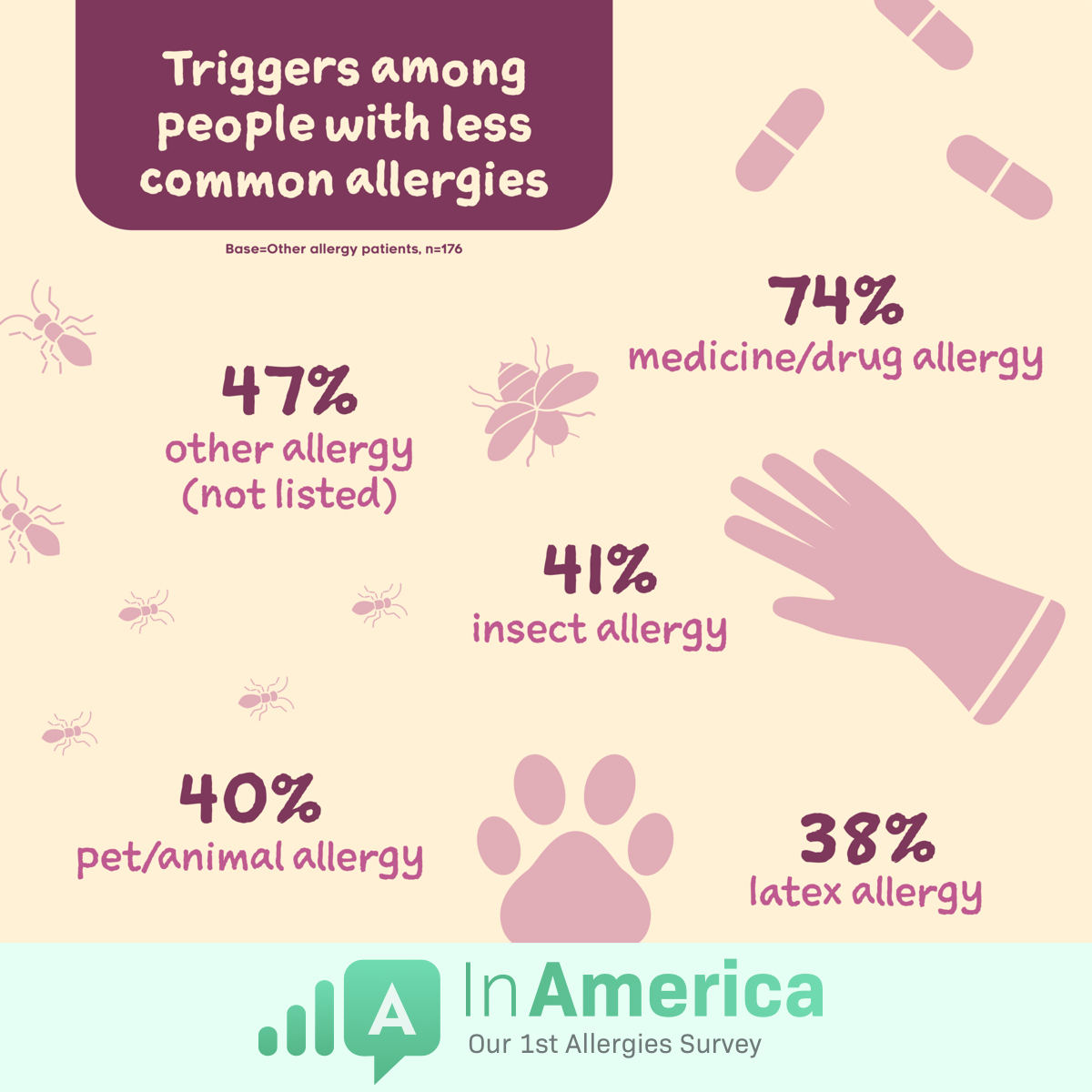Emergency Exposures: Living With Less Common Allergies
Several allergies, such as respiratory and food allergies, are quite widespread and well-studied. But people also have allergies to medicines, insects, and latex. Nearly anything can be an allergen and cause an allergic reaction in a person, which can make managing allergies exhausting, frustrating, and, sometimes, life-threatening.
Allergies can develop at any point, and even change over time, making diagnosis and treatment complicated and dynamic. In our Inaugural Allergies In America Survey, 1,021 respondents shared their experiences living with all types of allergies.
What are triggers among people with other types of allergies?
Knowing which specific allergens can trigger your symptoms or a serious allergic reaction is vital to avoiding exposure. The allergen route of exposure matters as well. Of the 41 percent of respondents with an insect allergy, 81 percent are allergic to stinging insects like bees and wasps. Plus, 69 percent of respondents with an insect allergy are allergic to mosquitos, ticks, bedbugs, etc.
Latex allergies are typically rare among the general population, but healthcare workers, people who have had multiple surgeries, or children with spina bifida are at higher risk. Interestingly, 53 percent of respondents with latex allergies reported being triggered by being in the same room or touching the allergen. However, 47 percent are only triggered when touching latex. Across all the types of allergies, especially in this category, most people surveyed manage their symptoms by avoidance.
What ways have people been diagnosed with less common allergies?
People who live with allergies have used a variety of tests and methods to get their specific diagnosis. Getting the right diagnosis can inform the best treatment plan for you. For less common allergies, epinephrine injection is a somewhat popular treatment option. In our survey, 32 percent of respondents reported having an epinephrine injection for their allergies.
Diagnosing rare allergies can be difficult. During allergy testing, 6 percent of respondents had a false positive result for allergies. And unfortunately, a common way that respondents learned about their allergy was by exposure that resulted in emergency care or anaphylaxis.
The Inaugural Allergies In America survey was conducted online from March 2020 through February 2021. The survey was completed by 1,021 people.



Join the conversation